MVP Design: Transform Your Business in the Early Stages
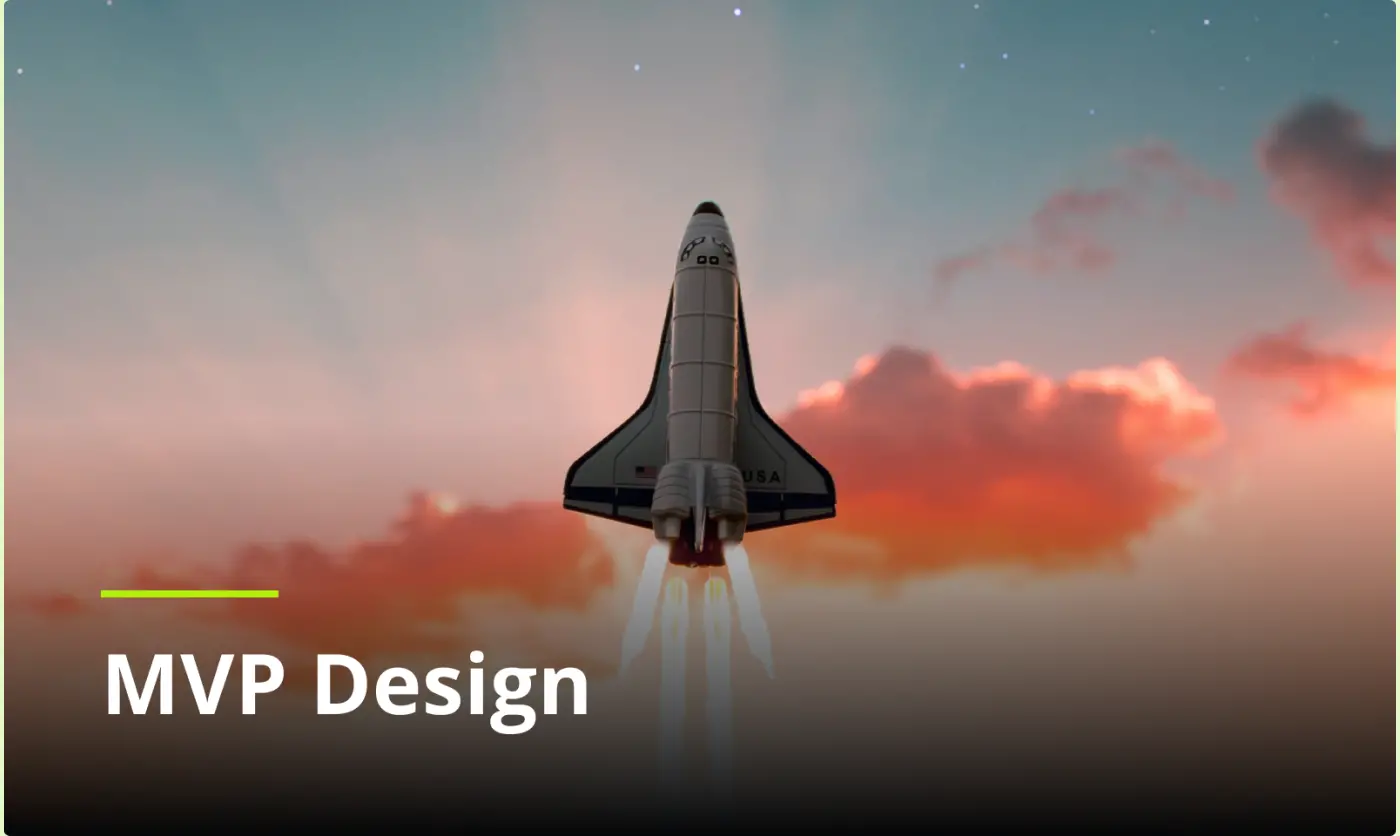
An adequate approach to MVP design is a notable part that allows the development of an in-demand and profitable app or software for a startup or an established business. This step can be a defining moment that shows whether or not your product idea will succeed upon launch.
When entertaining an idea for a new product, many founders tend to get discouraged from implementing their plan, seeing how often startups fail before they reach success. However, with the introduction of minimum viable product design, the business plan becomes much easier to handle. Ensuring a professional and skilled design team is alongside you to take on such a significant task will also become integral.
Working closely with your specialists on presenting future products leads to a clear understanding of development and the opportunity to introduce the concept to inventors. Keep reading this article for more MVP design tips, benefits, and the product creation
What is MVP?
A minimum viable product is a version of the product with a minimum set of core features. The concept of an MVP allows developers and business owners to validate whether their product startup idea can be successful on the market and well-received by the users. Most solutions are designed to showcase only the basic functions and necessary features to allow for rapid testing and iteration.
According to the statistics, about 90% of startups fail, and one of the leading reasons is that they don’t develop a minimum product to evaluate future products. The minimum product stands for creating a solution with several features. It’s a working mechanism that can be presented to investors or customers for previous testing.

MVP’s main characteristics.
When it comes to the MVP design, it goes beyond creating screens that showcase what the product is supposed to be like. Before a minimum product is designed, several milestones precede your viable product:
- A wireframe. As a starting point for creating a viable product, a wireframe is a black-and-white demonstration of how the basic UI design will be implemented. Most wireframes look like a sketch outlining the basic features, encompassing a design system for your creative team of designers, developers, and a project manager to follow.
- A mockup. At the mockup stage, your team works on bringing a design vision to a more tangible picture. Mockups are created by designing more detailed visual screens of the product. UI designers implement as many interface elements as possible, such as fonts, colors, logos, and other details within a UI kit.
- A prototype. Acting as a simplified simulation of the final product, an MVP prototype is a more comprehensive and complex mockup demonstrating usage paths and fundamental interactions that users will engage in. Interactive prototypes are meant to test the user behavior and response to the product while not technically fully functional.
By investing time in MVP design, business owners can hire UX designers to be more assured that their product idea will be successful long-term. This helps build a factual basis for the business while allocating less budget for development costs.

Now that we have a basic understanding of what MVP design is and what milestones you can expect from the design process, we can dive deeper into the types of approaches to creating minimum viable products.
In general, many MVPs can be divided into low-fidelity and high-fidelity. These two categories are what predominantly MVP design is separated into. Depending on your business idea, you may choose one or the other approach, considering the numerous types that fall into each category.
Let’s take a closer look at each one of them.
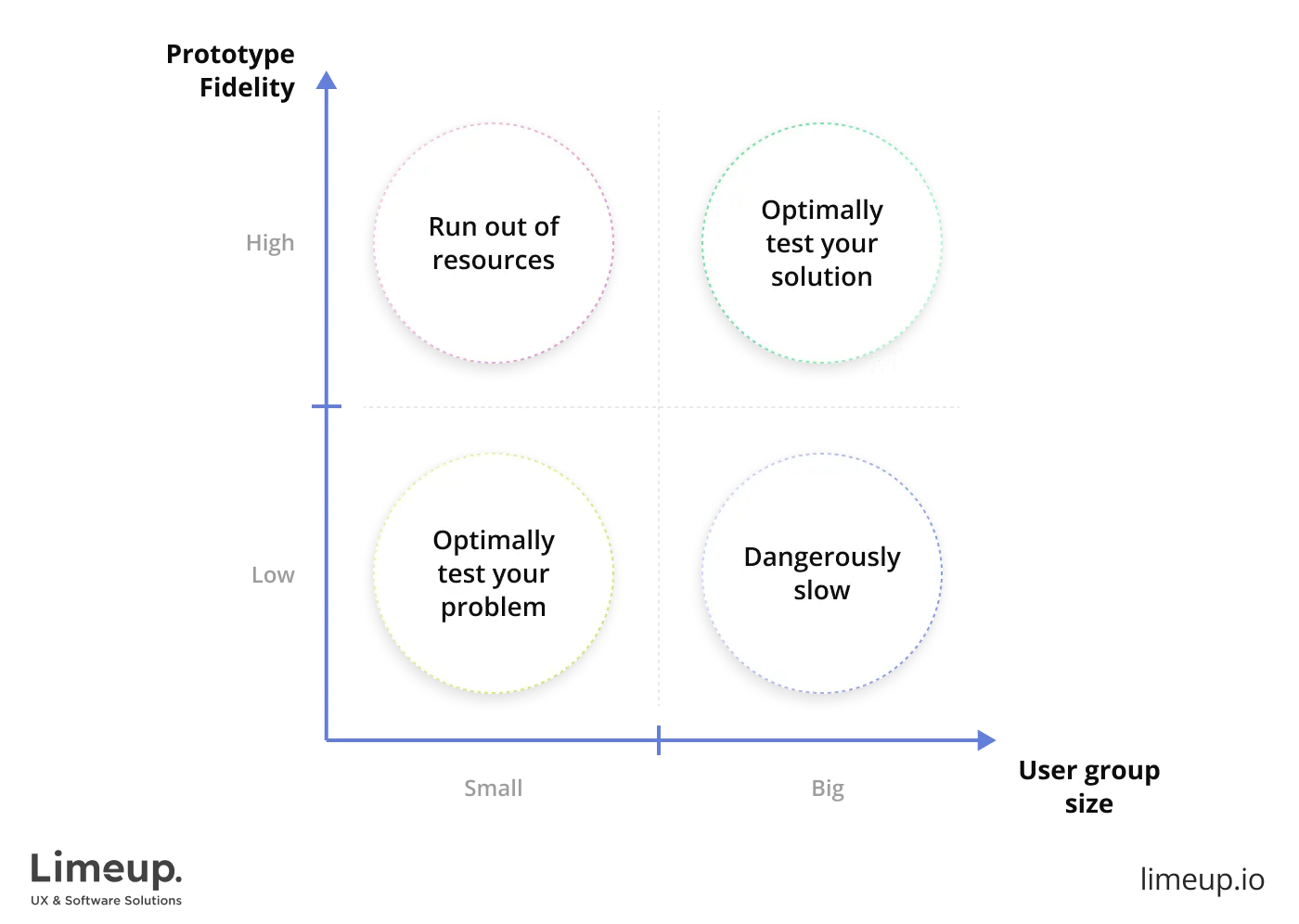
Matrix of Low-Fidelity and High-Fidelity prototype.
Low-fidelity MVPs
As the name implies, low-fidelity ones are cheaper to create, usually involving the design of wireframes and simple prototypes that demonstrate only essential features. Such minimum viable product design is an excellent way to initially test how feasible and potentially successful a product idea is.
At the stage of the product discovery process, low-fidelity solutions can be a great way to discover the target audience’s problems and explore how your product can help solve them. Then, test it with early users to validate the solution.
In MVP software design, there are several types of low-fidelity and high-fidelity. So, let’s look at the most commonly used ones:
- Landing page. The first touchpoint users will have with your product is a simple landing page. You can design a web page to introduce users to your offering and promote its benefits and values. It is a great way to test how interested users would be in your product and whether it is viable to invest in development.
- Explainer video. You can create a short video explaining your future product’s core concept and functionalities, like messaging or video call features. This is a popular way to gain insights into the demand for it on the market. Simultaneously, it allows you to keep the development process costs at a minimum.
- Fake door. This concept operates based on gauging how many users would be interested in your product. For example, you can design a landing page with a call to action button that takes users to a page with a banner like “Coming soon.” The number of visits to that page would indicate the number of engaged users.
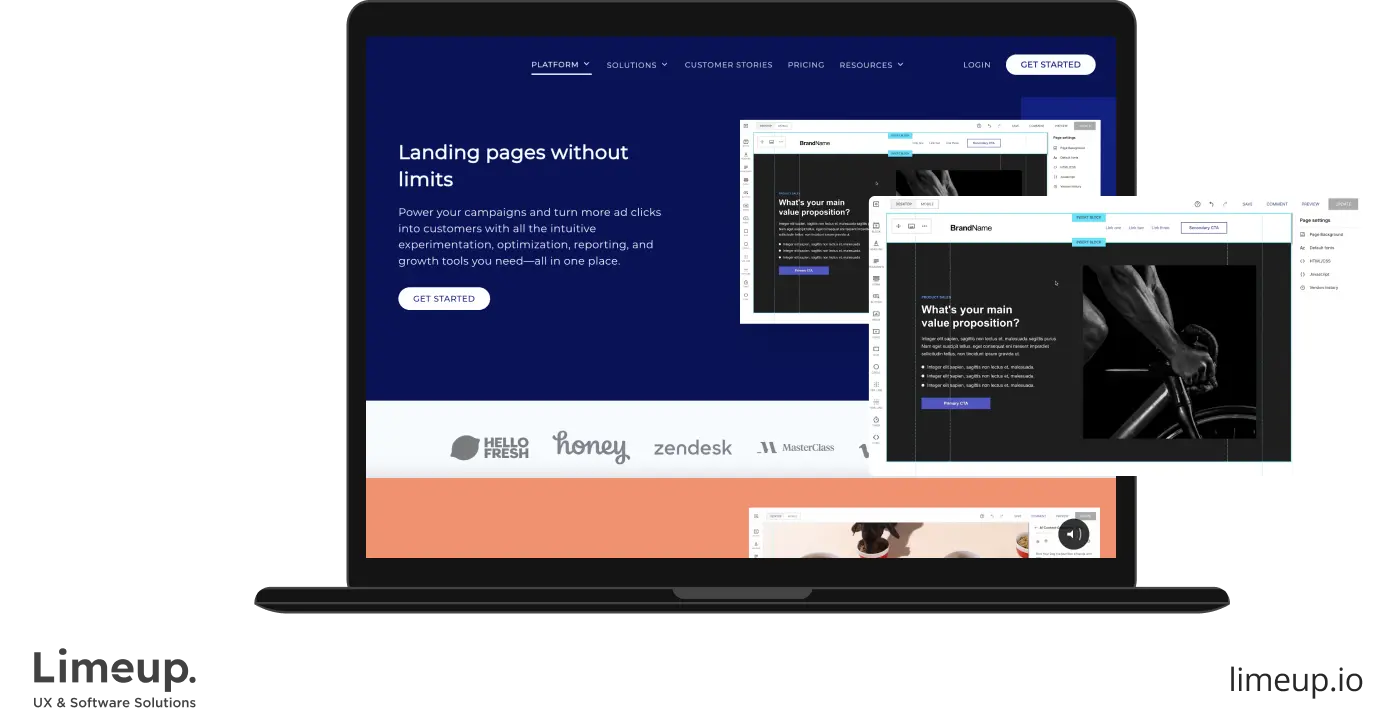
Landing page example.
High-fidelity MVPs
A high-fidelity one is a more comprehensive and fully representational prototype of a final product incorporating more complex UI and UX design features. The technical team focuses on developing a user-centered experience and showcasing key benefits through an appealing user interface.
With more emphasis on developing based on UX design principles, specialists leverage design thinking to create more flexible solutions. With this, business owners can collect more nuanced data about their product ideas and adjust their development and branding strategies accordingly.
Like low-fidelity MVPs, a few of the most popular approaches to high-fidelity minimum viable product design exist. Here are some of them:
- Wizard of Oz. This type presents an illusion of a fully developed product that allows users to interact with it. In reality, the requested actions are manually controlled by a human to replicate what the finished product is supposed to do. While Wizard of Oz is more expensive, it is instrumental in user research as it helps identify your product’s level of interest and desirability.
- Concierge. Like Wizard of Oz, this MVP approach simulates the experience of a completed product by leveraging human resources without the need to invest in the technology entirely. The difference is that with Concierge MVP, the early users know they receive services from real users.
- Piecemeal. Only certain parts of the minimum viable product design are implemented using third-party services instead of developing custom technology. In this approach, a human resource is also used to connect the user and the service, allowing for rapid testing and product idea validation.
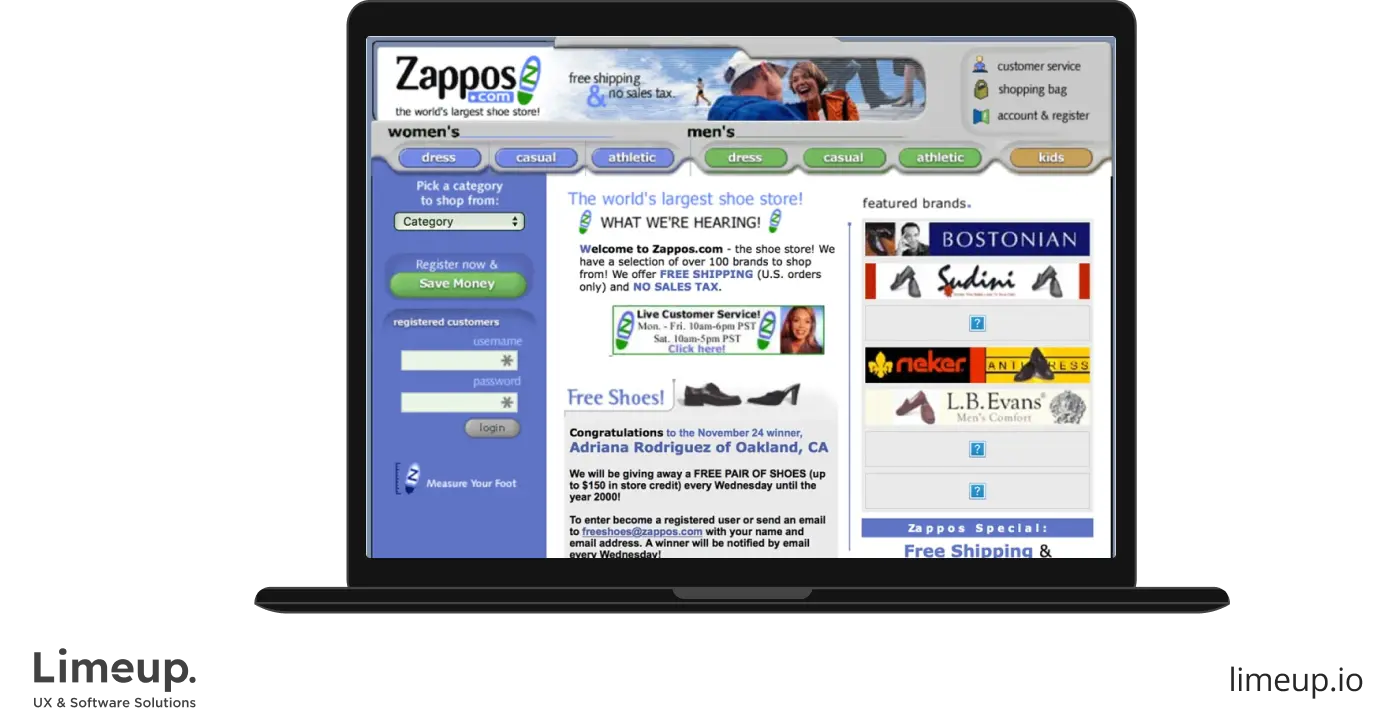
Wizard of Oz example.
The type of MVP software design will depend entirely on your budget, available resources, and the information you are trying to collect. So, consulting with your development team on which approach would suit you the most is essential.
Why is design important for an MVP?
Since it presents your product, providing a visually appealing design is necessary for businesses that want to grab users’ attention. Let’s refer to the statistics: Jeff Torczon, an InfinityHR Founder, said that 94% of users’ first impression is related to your design. It indicates that providing aesthetically pleasing visuals will help you to reach more customers.
Keep in mind that the design will also be tested according to the industry market standards and expectations. Thereby, a niche-related method will be cost-effective and the most suitable option for future MVP software design. Moreover, the business receives:
- Clear vision of customers’ pain points and expectations.
- Deep insights on functionality and visual parts of products.
- Data-driven UI and UX design vision due to users’ needs.
Investing in MVP UX design means caring about end users, offering them not another standard product but a problem-solver.
What does a minimum viable product design include?
A minimum viable product design that yields positive results for the business cannot be created without operating on the established principles. By leveraging design thinking methodologies, UX and UI design specialists base their decisions on proven approaches that increase the positive response from the users.
While numerous nuances encompass good design, you must consider UX and UI principles when creating a minimum viable product (MVP). They include the following:
- User-centered design. Putting the user first is the main principle of any design process. You have to understand their needs and goals to find the demand by properly addressing their problems.
- Simplicity. Focusing on minimalist and simple interface elements is a must. You want to avoid confusing users with cluttered interfaces or frustrating them with complex registration forms.
- Focus on essential features. Your MVP design must focus on demonstrating the core value of your proposition to inform users how it can benefit them. Hence, an MVP should prioritize fulfilling the primary purpose of the product.
- Feedback prioritization. Since the direct goal of MVP design is to test whether there is a demand for a specific solution, you have to prioritize the users’ opinions. Only by closely listening to what users think about your product can you create a solution that will find its rightful place in the market.
- Rapid iteration. Being able to adapt or change the direction of your product quickly is vital in creation. You have to stay flexible to adjust your offering to meet the demand of users and the market.
Such principles are widely used within minimum viable product design providers. Choosing the right UX design agency in London can ensure your solution follows the recommended guidelines and principles.
5 MVP design tips for outstanding results
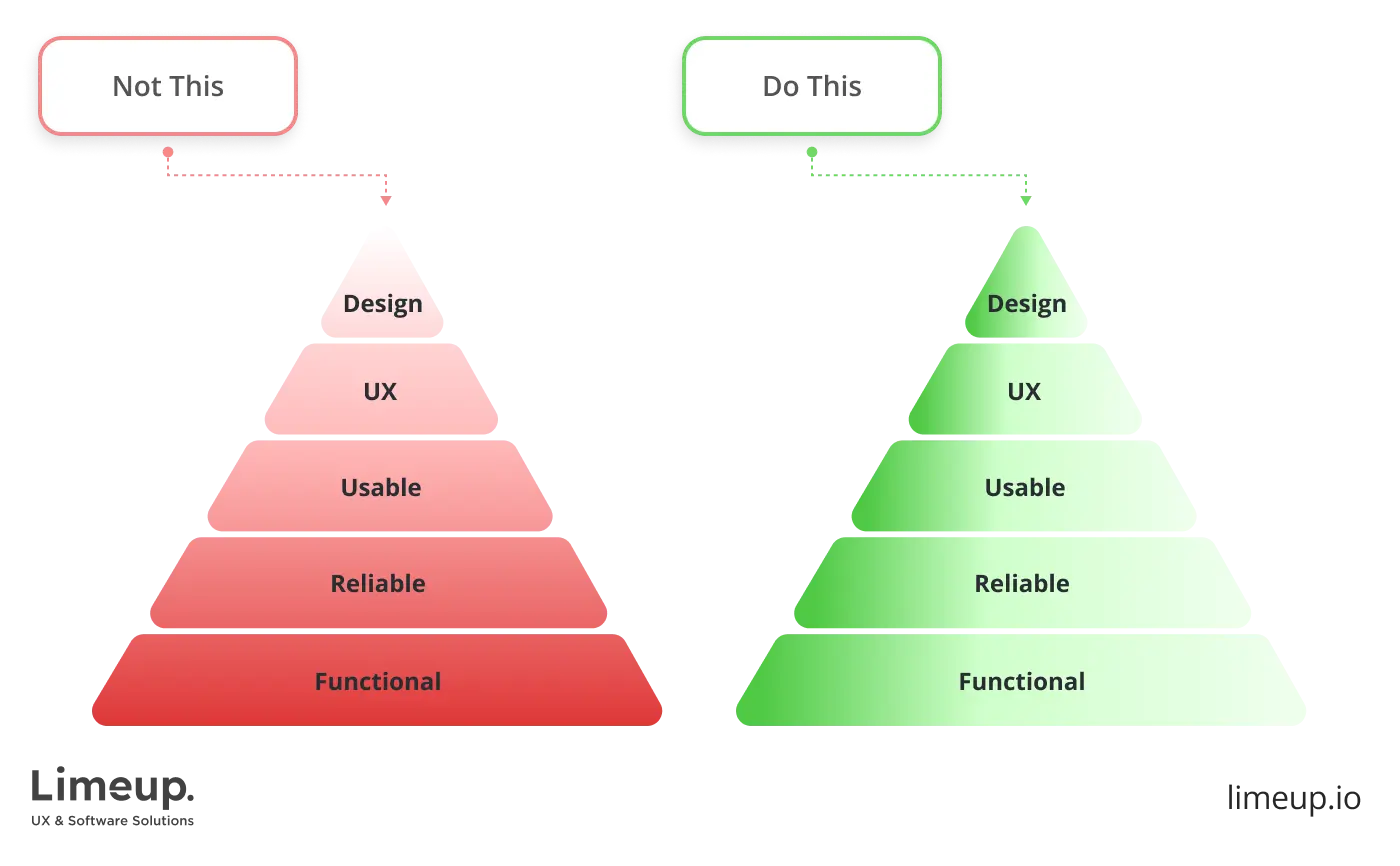
Dos and don’ts of designing a minimum viable product.
Understanding what the design process typically looks like can lift the curtain on what goes down behind the scenes. While depending on the type of MVP UX design you are looking for, the steps and phases may differ. However, we can take a deeper dive into the general stages of the development process.
Let’s look at the basic 5 steps of the MVP design process that you and your team will likely take.
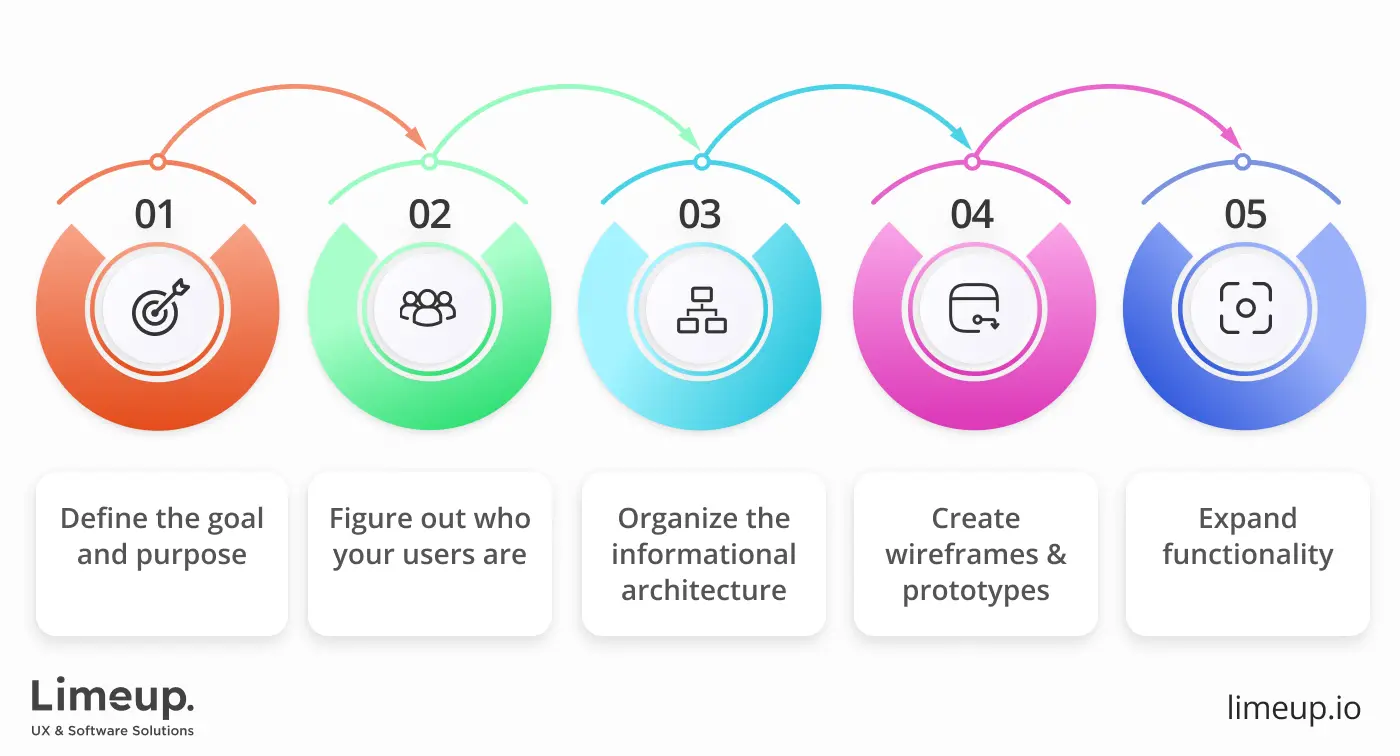
MVP design process.
Tip 1: Define the goal and purpose
All good projects start with brainstorming a viable plan. Before you can start creating a solution, you need to have a solid understanding of its purpose, essential features, main functionality, the problem it is aimed to solve, and the audience it’s targeted to.
Moreover, you have to set your success goals and how you plan to measure them to evaluate the performance. In addition, it must also account for high traffic loads to sustain many users and accurately analyze engagement.
Tip 2: Figure out who your users are
A successful MVP can’t be complete without clearly defining the type of people using your product. An excellent tool for figuring out your target audience is user personas. These are fictional representations of the main user groups meant to perform specific actions with your product.
An experienced UX research agency can help you understand the user needs and expectations by conducting in-depth user research. A UX specialist can also deliver user stories and journey maps to outline further how the users will interact with the product.
Tip 3: Organize the informational architecture
At this stage, the design team, along with a project manager, works on creating a mind map that showcases how each element of the application design and functionality connect. It serves as a visualization of what steps the users will take once they start engaging with your product.
With the help of UX design tools and graphic editors, the specialist creates a simplified map that links topics and subtopics on the page into logical groups of action, essentially creating a content hierarchy. By this point, a client approves the user flow, and the team can move on to designing wireframes for a viable product.
Tip 4: Create wireframes and prototypes
Based on a solid mind map, UI design specialists can now build the design process within black-and-white wireframes for each screen. This step includes creating layouts that feature essential UI elements, which serve as the first visualization of what the MVP application design will resemble.
Leaving a detailed visual appearance for later, this step in the UX design process is to create an intuitive and easily navigational user interface. Once a wireframe is agreed upon, the design team can work on creating a prototype.
In general, the prototype’s fidelity level will depend on your business needs and the objectives you are trying to accomplish. Still, developing an interactive prototype closely resembling the final product is best. This will help in conducting efficient user testing, yielding valuable feedback.
Tip 5: Expand functionality
Once you have validated that your minimum viable product resonates with your audience, the user flow feels smooth, and the feedback has been implemented, you are on the finish line. From now on, you are free to develop new functionality that seems the most fitting.
Building upon the core features, you can expect your MVP design to be an iterative process with continuous improvements based on collecting feedback from your users. Upon launching your solution, you and your agile team will monitor the product’s performance to add features and evolve the project over time.

What does MVP design include?
A minimum viable product design that yields positive results for the company cannot be created without operating on the established principles. By leveraging design thinking methodologies, UX and UI design specialists base their decisions on proven approaches that increase the positive response from the users.
While numerous nuances encompass good design, we can highlight some basic functions and principles that most professionals use. They include the following:
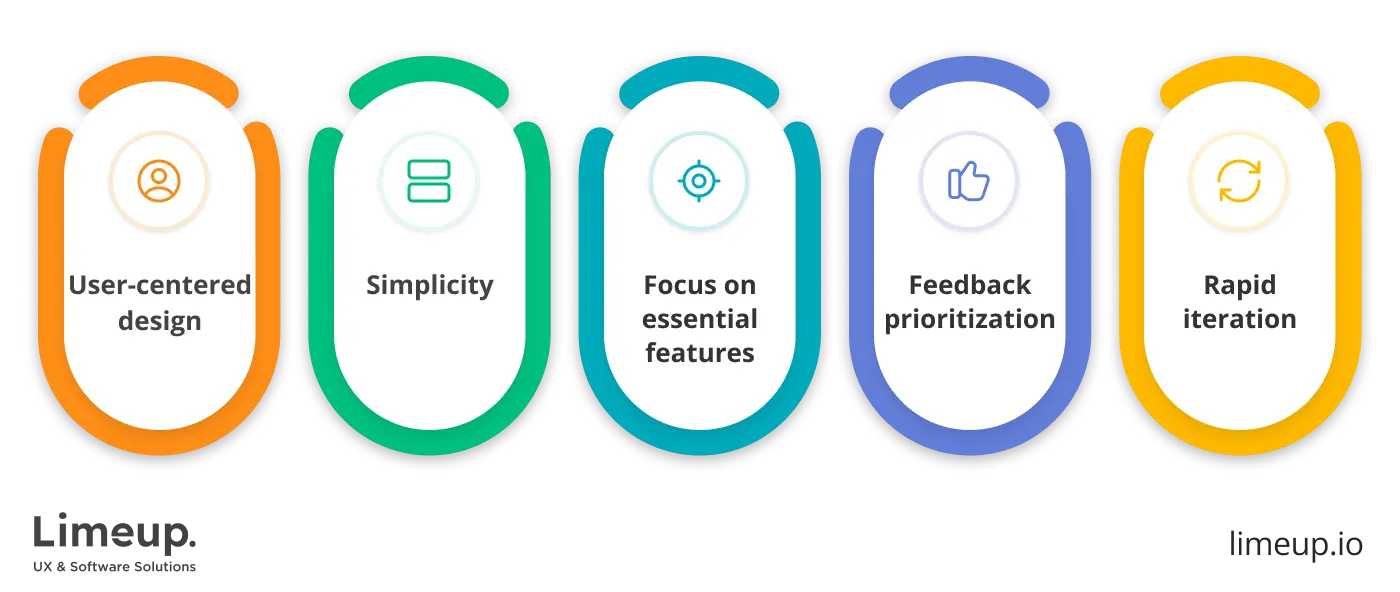
Basic principles of MVP design.
- User-centered design. Putting the user first is the main principle of any MVP design process. You have to understand their needs and goals to find the demand by adequately addressing their problems.
- Simplicity. When designing, focusing on minimalist and straightforward interface elements is a must. You want to avoid confusing users with cluttered interfaces or frustrating them with complex registration forms.
- Focus on essential features. Your MVP design must focus on demonstrating the core value of your proposition to inform users how it can benefit them. Hence, it should prioritize fulfilling the primary purpose of the product.
- Feedback prioritization. Since the prior goal of designing a minimum product is to test whether there is a demand for a particular solution, you have to prioritize the users’ opinions. Only by closely listening to what users think about your product can you create a minimum viable product that will find its rightful place in the market.
- Rapid iteration. Adapting or changing your product’s direction quickly is vital in this type of creation. You have to stay flexible to adjust your offering to meet the demand of users and the market.
Such principles are widely used within minimum viable product design providers. Partnering with the right agency can ensure your MVP follows the recommended guidelines and regulations.
Going further, let’s define the pricing of MVP development. Estimating the cost for any type of project is extremely difficult without knowing the specifics of the work. Numerous circumstances affect the final price for this type of design.
Here are some of the factors:
- The type of design. As we learned, business owners can request many minimal viable products to create. For example, an explainer video or landing page MVP will cost significantly less than a Wizard of Oz or a Piecemeal type.
- The level of experience of the design team. Working with a UI or UX designer, MVP developer, and project manager with many years of experience and a broad skill set will inevitably cost more than partnering with less knowledgeable specialists. In the first option, such a team is likely to deliver a quality result.
- Iterative development and post-launch support. With a project, you can expect an ongoing improvement cycle that builds on the existing solution. This can result in additional costs associated with implementing upgrades and maintenance down the line.
Of course, other nuanced aspects affect how much you can expect to pay. The location of the design agency you choose to work with may also become a factor. For instance, London design agencies may have different pricing than other cities or countries. Generally, a medium-complexity minimum viable product project’s prices can vary between $20,000 and $40,000.
How can your business benefit from MVP design?
When developing a new product, startups and established companies need to raise venture investment with a general idea. Proving that what you strive to create is viable and should be invested in can take time and effort. Especially if you need ground to guarantee that people will be interested in using your product.
This is when shifting your priority to MVP application design becomes vital. A minimum viable product is an effective way to start quickly from the get-go, test your product with users to collect significant feedback and invest in developing a product that will be in demand on the market. The design can benefit your business in many ways, such as:
- Develop a working product prototype with the least effort.
- Pitch your idea to raise venture capital.
- Start marketing campaigns.
- Release the product early with only the vital aspects developed.
- Gather feedback from early users to rapidly implement adjustments.
- Save the budget on the development of unnecessary functionality.
- Avoid creating a fully functional product that users are not interested in.
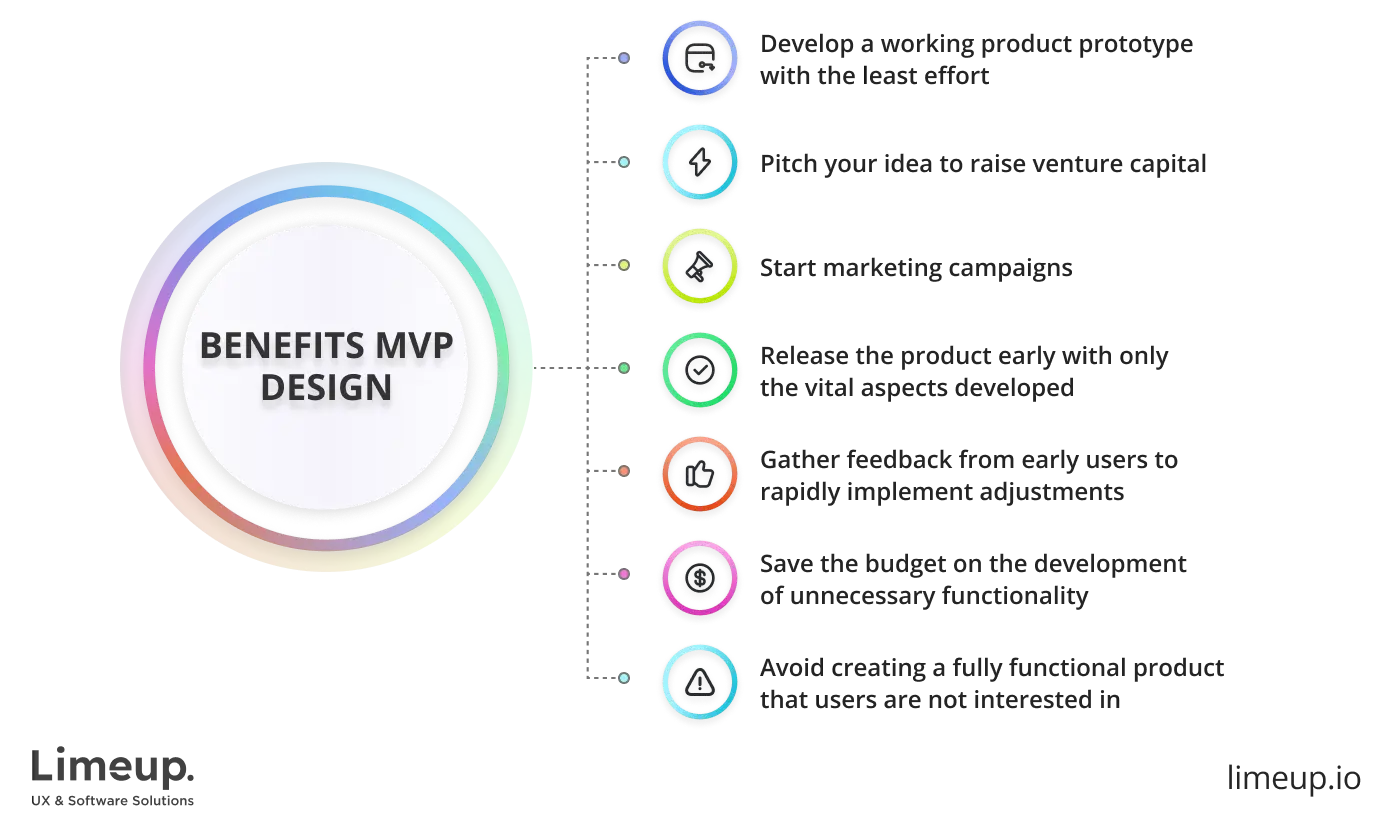
Benefits of MVP design.
The main reason startups and established business owners invest in a minimum viable product is that it helps them accelerate the time it takes to transform a product idea into a testable subject. It creates a way to generate a response from the users and iterate any required changes to ensure the product’s success.
With minimum viable product design, businesses can gain a competitive advantage. By entering the market quickly, you will have the upper hand over competitors by means of continuous improvement based on valuable user and market analysis. This can help your business stay ahead of the competition and adapt to the changes in market demands more efficiently.
How can Limeup help you with MVP design?
With such vicious competition and an abundance of great products on the market, startup businesses cannot afford to waste time and resources on projects that may not be viable. By understating the value of minimum product creation, business owners can mitigate the risk of failure and test their assumptions about the product with a tried and true method.
More than ever, staying lean and flexible when designing a new product is crucial. Hence, a minimum viable product can be an excellent tool for getting to the bottom of your target audience’s pain points and expectations. It’s a trusted method of validating your startup idea and ensuring it will bring feasible solutions to the users’ problems.
In addition, prioritizing future MVP software design aids you in increasing the chances of raising capital to develop the product further and avoid detrimental pitfalls in which many new digital products tend to get trapped.
For your MVP application design to prove worthwhile, partnering with reliable UX design specialists with qualified expertise in bringing viable products to life is essential. At Limeup, we offer collaboration with our skilled experts dedicated to designing impactful products and ensuring successful project delivery.
Reach out to us, and let’s discuss a brief overview of how we can help you design and develop a high-quality MVP that will allow your business to thrive.









